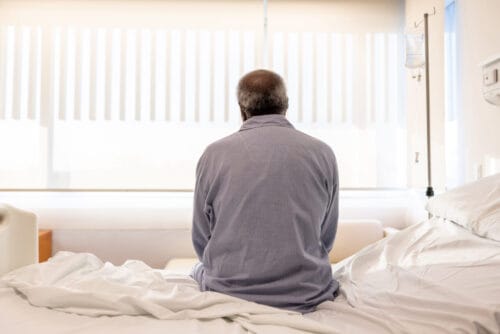Disparities in Opioid Overdose Deaths Are Worsening for Black Americans
September 8, 2021

Richard Lautens, Getty Images
New data from the NIH-supported HEALing Communities Study underscores the need for racially inclusive approaches to address the opioid epidemic in vulnerable neighborhoods.
Predicted data from the Centers for Disease Control and Prevention (CDC) show that 93,000 people died from drug overdoses in 2020—making it the largest increase in overdose deaths ever recorded. Of those deaths, 69,769, or 75%, involved an opioid. Opioid-involved overdose deaths have more than doubled since 2010. This rise has been largely driven by illicit fentanyl, a synthetic opioid.
Digging deeper into the data, researchers in Massachusetts discovered that, while opioid overdose deaths decreased slightly in 2018, those decreases were not seen among people of color. The Massachusetts Department of Public Health reported that from 2017 to 2018, reductions in opioid overdose deaths in the state were disproportionally accruing to whites, whereas things seemingly worsened for Hispanic and non-Hispanic Black individuals.
Marc LaRochelle, MD, a National Institute on Drug Abuse-funded researcher and primary care physician specializing in addiction medicine at Boston Medical Center (BMC), explained what he saw in the state data.
“It’s not that the Black and Hispanic groups are seeing disproportionate increases; it’s that they haven’t seen the advantage from the advances and changes that have been made,” LaRochelle said to HealthCity.
LaRochelle is a lead researcher involved with the national HEALing Communities Study (HCS), the largest addiction implementation study ever conducted that aims to reduce opioid overdose deaths by 40% during the study period with a focus on equity. HCS is administered in partnership with the National Institute on Drug Abuse (NIDA) and the Substance Abuse and Mental Health Services Administration and is funded by NIDA and the National Institutes of Health.
New data from the HCS is painting a similarly bleak picture. HCS researchers collected information from death certificates of more than 8.3 million people from 67 rural and urban communities hard hit by the opioid crisis in the four states taking part in the study: Kentucky, Massachusetts, New York, and Ohio. Across the four states, non-Hispanic Black individuals experienced a 38% increase in the rate of opioid overdose deaths from 2018 to 2019—while the rates for other race and ethnicity groups held steady. This demonstrates a dramatic widening of disparities for Black communities.

The new data has been published in the American Journal of Public Health, by lead author LaRochelle.
“We must explicitly examine and address how structural racism affects health and leads to drug use and overdose deaths,” said NIDA director Nora D. Volkow, MD, in a press release. “Systemic racism fuels the opioid crisis, just as it contributes mightily to other areas of health disparities and inequity, especially for Black people. We must ensure that evidence-based interventions, tailored to communities, are able to cut through the economic and social factors that drive disparities in substance use and addiction, to reach all people in need of services.”
Using opioid overdose data for tailored interventions
Timely access to this type of data has been difficult. National and state data are typically collected annually and may not be available for months after the end of the year. Even then, the information is not always widely accessible. However, early access to this data has been instrumental in informing specific HCS interventions—for example, it informed partnerships with local Black community organizations to improve access to naloxone distribution and overdose education.
“The more local and timely data communities have access to, the more tailored their approach can be for interventions,” said LaRochelle. “We know there are disparities in implementation of effective strategies for reducing opioid overdose deaths, but early access to better data like these allows communities to address equity with improved intentionality.”
Overall, the new data underscores the need for HCS’s aim of equitable, data-driven, and community-based interventions to target these disparities.
In Massachusetts, interventions are being implemented across the state. For example, community organizations in Bourne and Sandwich have begun a mobile clinic that provides harm-reduction services and low-barrier medication for opioid use disorder (MOUD) access. Brockton has a mobile unit with outreach staff on board to provide MOUD, including naloxone, perform wound care, and conduct blood draws. In Gloucester and Salem, mobile units are deploying syringe service programs. Lowell is using a “walking team,” including a Spanish-speaking harm-reduction navigator, to engage high-risk individuals in areas of congregation.
Ideally, this new data will better inform the HEALing Community Study and each community of tailored approaches to help people and populations most in need—particularly residents of color in these areas.


